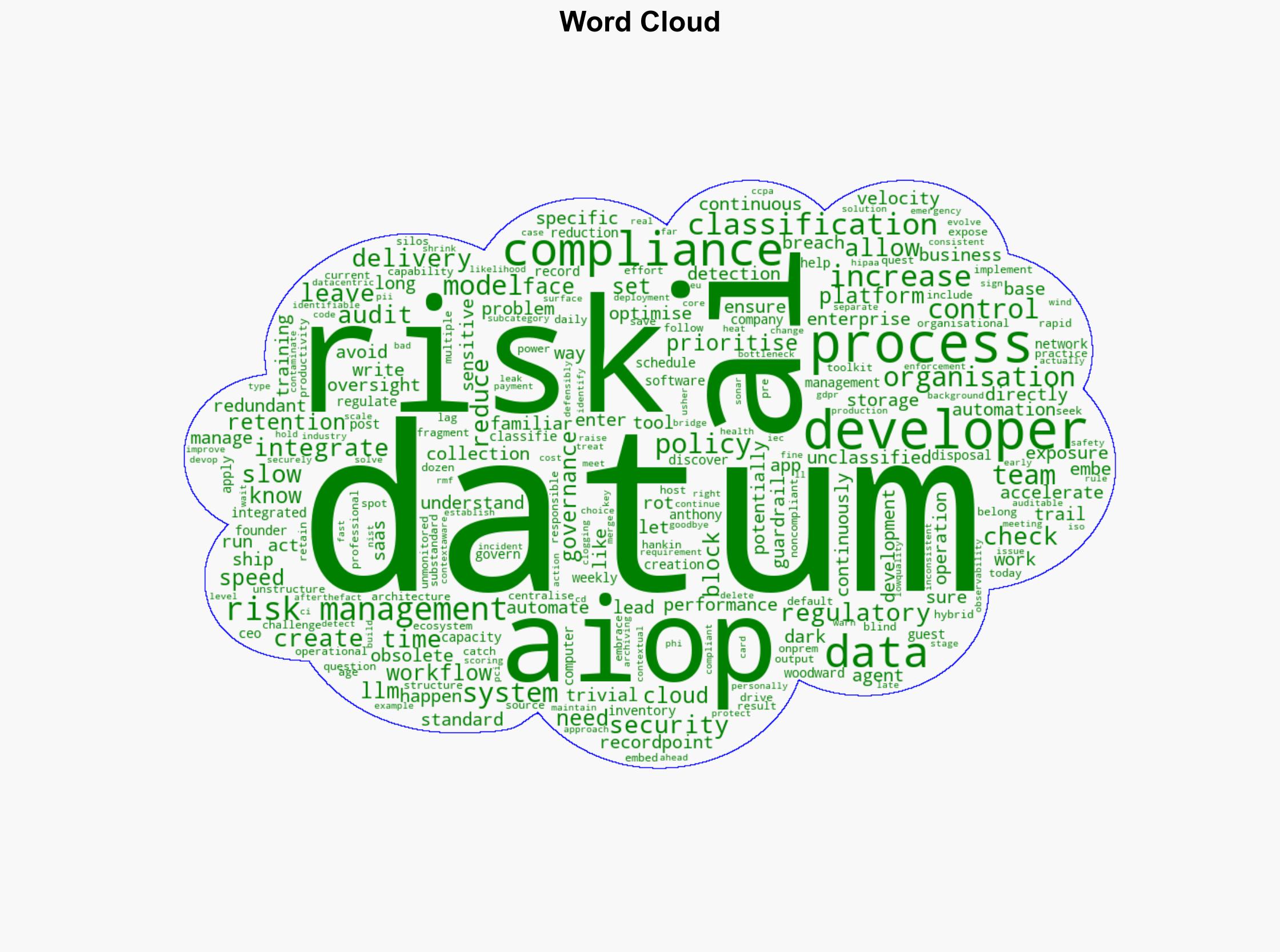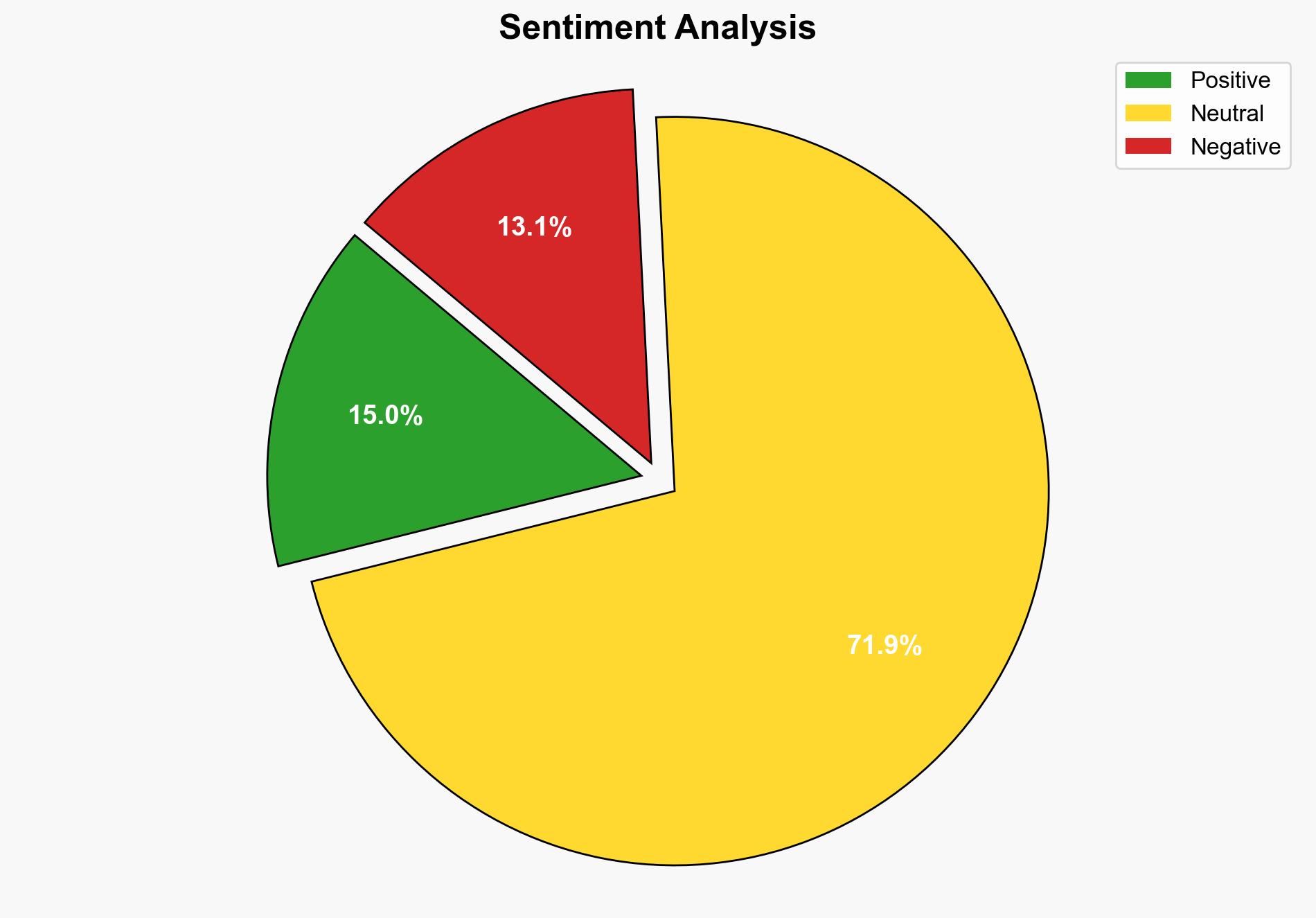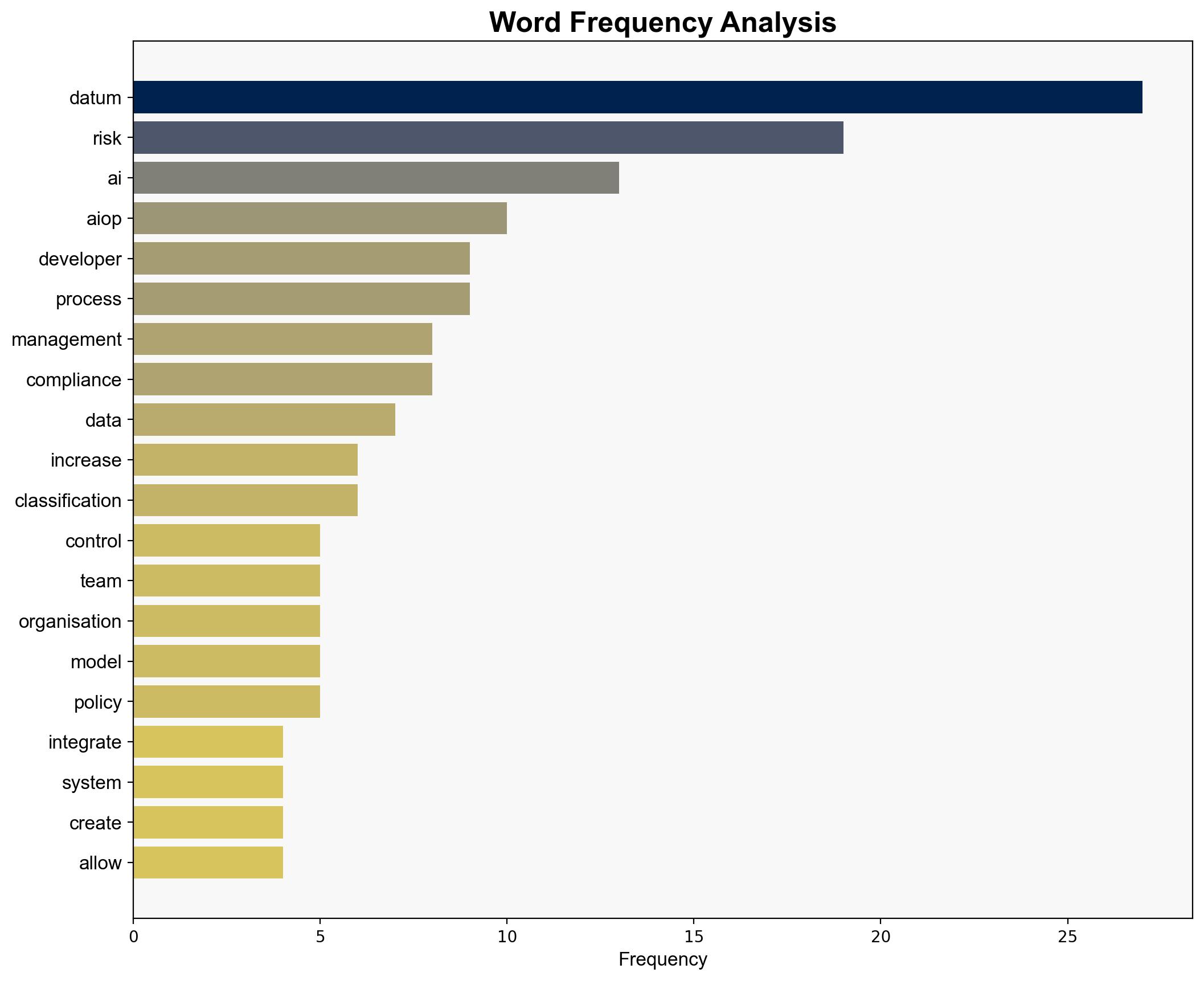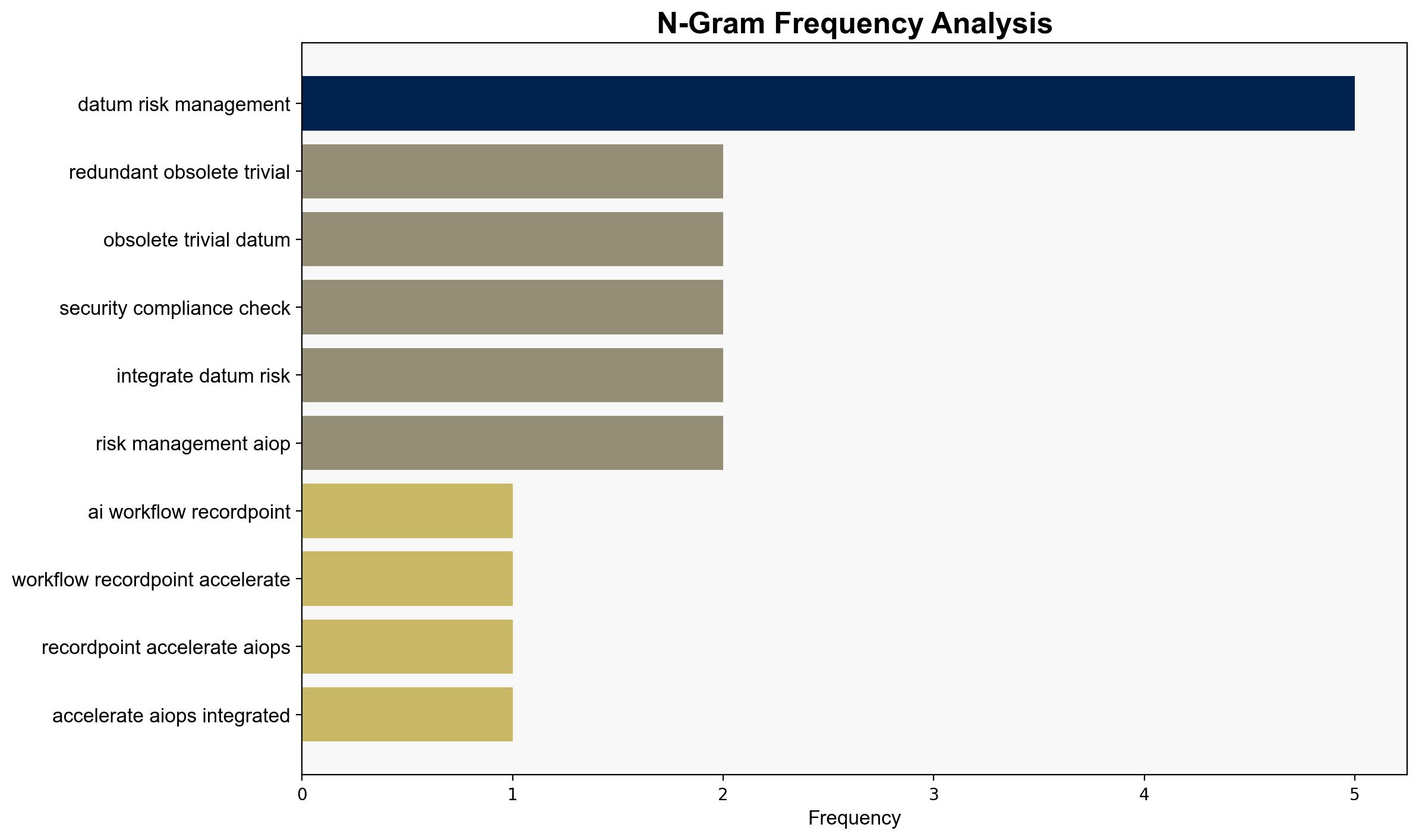AI workflows – RecordPoint Accelerating AIOps with integrated data risk management – ComputerWeekly.com
Published on: 2025-10-04
Intelligence Report: AI workflows – RecordPoint Accelerating AIOps with integrated data risk management – ComputerWeekly.com
1. BLUF (Bottom Line Up Front)
The integration of data risk management into AIOps workflows by RecordPoint is a strategic move to enhance compliance and efficiency. The hypothesis that this integration will significantly reduce operational risks and improve developer productivity is better supported. Confidence level: Moderate. Recommended action: Monitor the implementation and performance of integrated systems to validate risk reduction claims and productivity improvements.
2. Competing Hypotheses
1. **Hypothesis A**: Integrating data risk management into AIOps will significantly reduce regulatory and operational risks while enhancing developer productivity.
2. **Hypothesis B**: The integration will not substantially impact risk levels or productivity due to existing data silos and complex regulatory environments.
Using ACH 2.0, Hypothesis A is supported by the structured approach of embedding AI capabilities directly into workflows, which is expected to streamline compliance checks and reduce the risk of data leaks. Hypothesis B is challenged by the proactive measures described, such as continuous classification and contextual risk scoring.
3. Key Assumptions and Red Flags
– **Assumptions**: It is assumed that integrating AI capabilities will seamlessly address existing data silos and compliance challenges. Another assumption is that the current AI models are robust enough to handle complex regulatory requirements.
– **Red Flags**: Potential over-reliance on AI without adequate human oversight could lead to compliance oversights. The complexity of hybrid architectures and multiple data sources may hinder effective integration.
4. Implications and Strategic Risks
The integration of data risk management into AIOps could set a precedent for other organizations, potentially reshaping industry standards. However, failure to effectively manage data silos and regulatory complexities could lead to increased exposure to fines and reputational damage. The economic implications include potential cost savings from reduced compliance breaches, while cyber risks may be heightened if AI systems are not adequately secured.
5. Recommendations and Outlook
- Conduct regular audits of the integrated systems to ensure compliance and identify any emerging risks.
- Scenario-based projections:
- Best Case: Successful integration leads to industry-wide adoption, reducing compliance costs and enhancing productivity.
- Worst Case: Integration fails to address data silos, leading to increased regulatory fines and operational disruptions.
- Most Likely: Gradual improvement in compliance and productivity as systems are fine-tuned and optimized.
6. Key Individuals and Entities
– Anthony Woodward, Founder and CEO of RecordPoint
7. Thematic Tags
cybersecurity, data management, regulatory compliance, AI integration, operational efficiency





